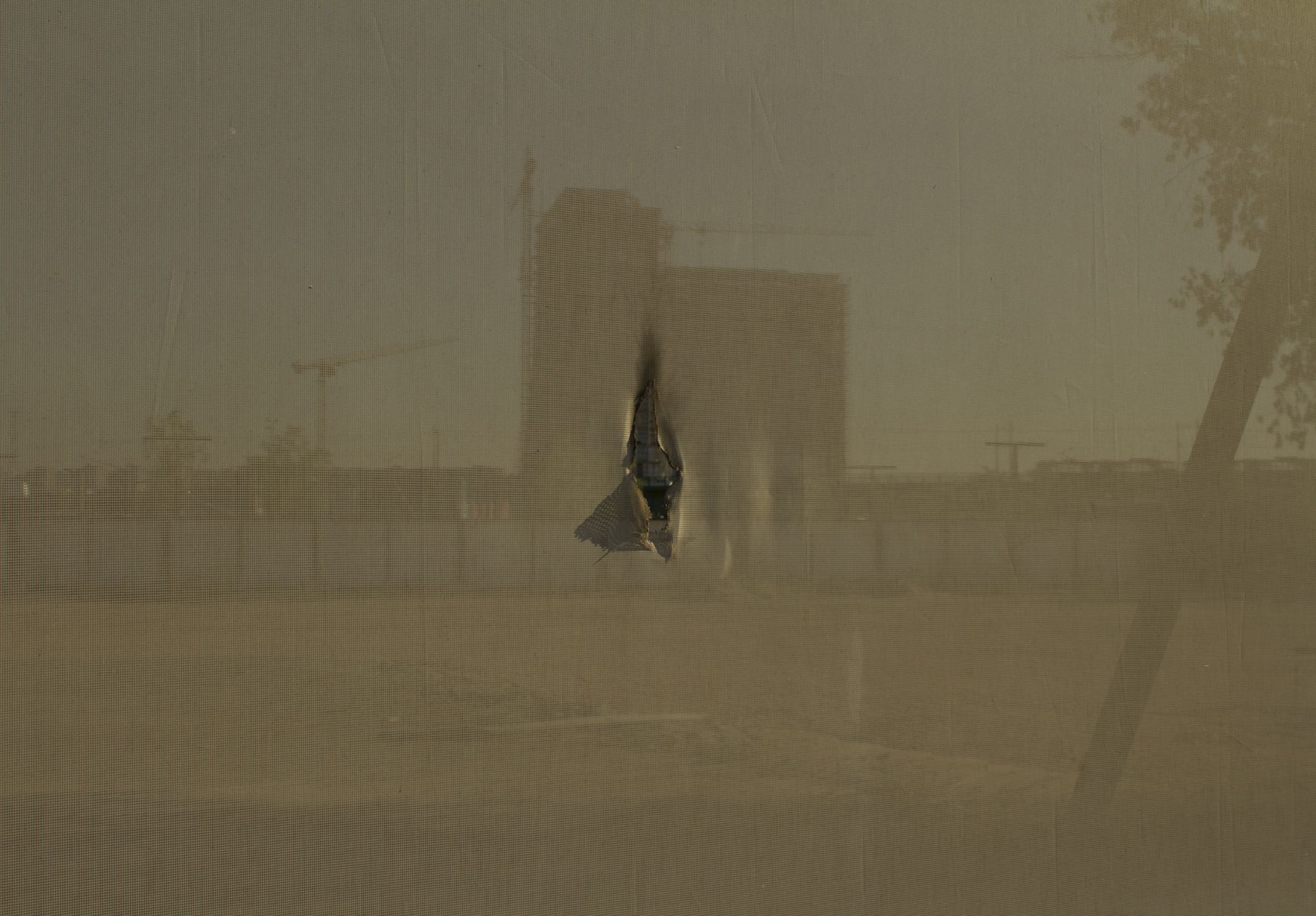Eagles,
Army Headquarters and Football Films, 2014-present
Since
2014,
I have been photographing and documenting three specific
sites in Belgrade’s ever-changing urban landscape. These
locations show condition where conflict, economic
speculations, and historical revisionism have disrupted and
damaged not only the physical environment and infrastructure
of the city but also the social and cultural networks.
The
photographic
series focuses on architecture and its role as a “material
witness” in this process. As
the transformation appears unstoppable and its duration
unknown, my project aims to document and archive these
sites, providing a visible record of the steps and processes
that will shape the future.
The
Army Headquarters
The building of the Army Headquarters, also known as the Ministry of National Defense in Belgrade, was a seminal architectural project that symbolized a new national identity, built between 1954-1963. Architect Nikola Dobrovic's scheme won the competition held by the Yugoslav Army, as he distinguished his design from the Soviet counterpart in Moscow by stripping it of any classical representations of power. Instead, he created "Bergson's diagrams" (referring to French philosopher Henri Bergson) based on the void where the nation's identity was to be found, in non-matter and in the action of the individual moving through the void.The complex's only (physically) recognizable symbol is an evocation of the Sutjeska canyon, the site of one of the greatest battles against Fascist occupation in WWII. |
In 1999 NATO presented it
as “the heart of the war machine” and consequently
severely damaged it in bombing campaign. Though
the building was emptied prior and had little
military value, it was seen as a symbolic target.
|
Belgrade
Waterfront

This
is a construction site of new urbanistic project Belgrade
Waterfront that was initiated in 2014
between the Government of Serbia and Eagle Hills,
Abu Dhabi-based private investment and development
company. Project is supposedly worth €3.5bn
including condominiums, hotels, offices, retail,
parks and paths. However, the project has been
involved in corruption scandals, including illegal
destruction of private property using unlawful
force, appropriation of city-owned land, and
obtaining illicit building permits.
|
Situated
on the banks of the river Sava, at the foot of
Belgrade’s historic center, this monster project
produces quasi-contemporary architecture including
new monuments that intend to correct perceived
ideological and historical errors. Besides
displacing many institutions, the project has also
led to the planned demolition of the Belgrade Fair
buildings, representing a loss of important
modernist architectural heritage.
The
Belgrade Waterfront zone, where today's ubiquitous
neoliberal system is fully unleashed without
boundaries, creates a dystopian atmosphere akin to
a post-apocalyptic horror films.
|
Montevideo
film
set
This
site was initially a replica of famous downtown
Terazije square from 1930’. Built as a set for the
film Montevideo:
Taste of a Dream, 2010 (nostalgic tale of
the Kingdom of Yugoslavia national team and their
journey to the 1930 First World Football
Championship in Montevideo, Uruguay).
|
Today,
an international IT company has built its
headquarters on one part of the site, while the
rest is still under construction. The forgotten
fountain prop remains in the midst of all this new
development, with the old modernist infrastructure
visible in the background.
This
site is located in New Belgrade, a modernistic
city planned and developed after World War II,
with initial urban plans designed by the architect
Nikola Dobrovic.
|